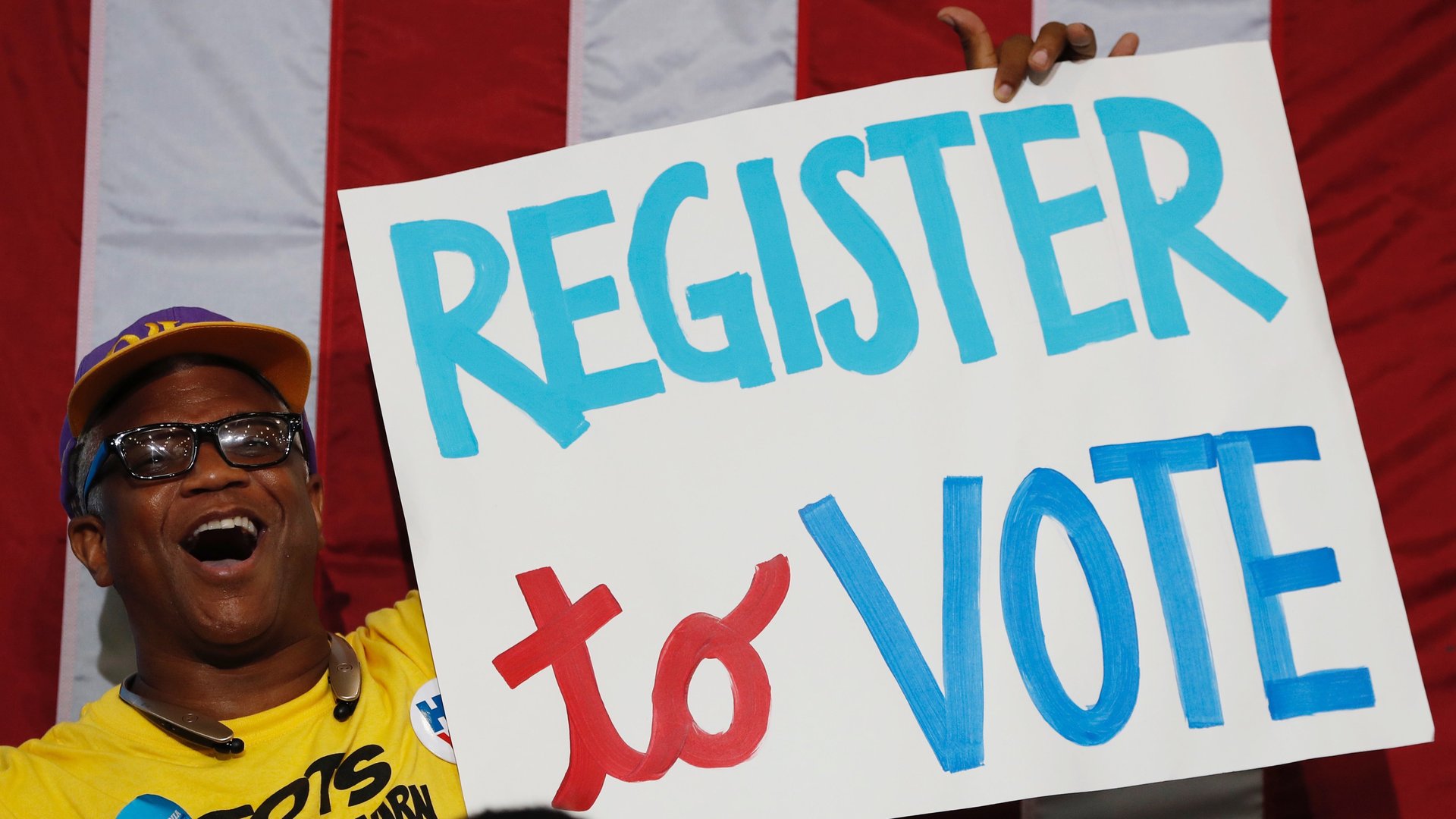US citizens: How to register to vote in November, wherever you are in the country or the world
Few feel neutral about their choices for US president this divisive election season. And with election day—and the looming choice between Democrat Hillary Clinton and Republican Donald Trump—less than three months away on November 8, it’s high time for US citizens to make sure they are registered and know how to vote.


Few feel neutral about their choices for US president this divisive election season. And with election day—and the looming choice between Democrat Hillary Clinton and Republican Donald Trump—less than three months away on November 8, it’s high time for US citizens to make sure they are registered and know how to vote.
Democracy only works if citizens actually turn out to the polls—a right that just over half of US eligible voters exercised in the last general election, trailing most other developed countries. Americans, here’s how to make sure you don’t end up disenfranchising yourself.
If you live in the US
Voter registration deadlines for the general election vary by state, but they are mostly in October. (The earliest one is Oct. 8 for the District of Colombia, Mississippi, and South Carolina.)
State-by-state guides with details on how, when, and where to register and to vote are available in various sites, including a comprehensive guide by CNN, and a well laid-out interface by Rock the Vote. In Google, all you need to do is type “how to vote” into the search bar, and a state-specific guide will appear based on your location. Each offers all the relevant deadlines and qualifications for registration if you plan to vote in your home state, as well as information on voter ID requirements (which vary state to state). Most states also offer an online system to check if you’re already registered to vote.
If you live abroad
If you think your overseas vote won’t affect anything, get this: Over 8 million US citizens (excluding military) live outside the country, according to one State Department estimate cited by the Association of Americans Resident Overseas. That’s more than the population of all but 12 US states. In the 2000 election recount, a Republican push to count absentee ballots from overseas Florida voters had a “decided impact” on George W. Bush’s victory, a New York Times investigation in 2001 found.
For Americans who live outside the US, time is of the essence. Overseas voters must register to vote by the deadline in their state, then comply with the deadlines to request an oversees ballot and submit their vote (listed at any of the state-by-state resources above). To return the ballot, follow your state’s protocol—mail, US embassy drop-off, email, or fax.
Experts recommend starting the process of registering to vote and requesting a ballot at least 90 days before the election—a date that passed in early August. But most states’ deadlines to request overseas ballots and to submit them are in early November, so there’s still time.
Starting every January, people can log on to the Federal Voting Assistance Program’s website and register to vote absentee by completing a Federal Post Card Application (FPCA) form and submitting it to your local office online, via email or fax. To sign up and establish which state they can vote in, US citizens must use the address of the last real home they lived in before moving out of the country.
If you miss the deadline for an absentee ballot
If you’re registered to vote but don’t receive your absentee ballot in time, you can still submit a Federal Write-in Absentee Ballot (pdf) on the FVAP website, or with assistance from a US embassy or consulate. If your regular absentee ballot arrives later, send it back still—the FWAB will only count if the regular ballot doesn’t reach the intended state’s office.
Or, of course, you can return to the US to vote in your state.
If you’re in the US, but not in your home state
If you’ve permanently moved within the US, you must re-register in your new state by completing a new voter registration form and updating your address with the state election office. The change can be initiated via the National Mail Voter Registration Form or in person at the election office, the Department of Motor Vehicles, public assistance agencies or any designated voter registration agency (which can include public libraries or schools).
The voter registration application asks you to list your former address so your new election office will notify your older one, but the Election Assistance commission recommends that you also inform your old state about your relocation.
If you are temporarily away from your home state, follow the guidelines for submitting an absentee ballot, as described in the”If you live abroad” section above.
If you’ve never lived in the US
Twenty-four states and the District of Columbia allow US citizens 18 or over who have never lived in the US to submit absentee votes, contingent upon conditions such as having a parent who is a registered voter.
Other questions? The FVAP has detailed FAQs on absentee voting. Other helpful resources include Rock the Vote, Vote From Abroad, the US Vote Foundation, and the Overseas Vote Foundation.